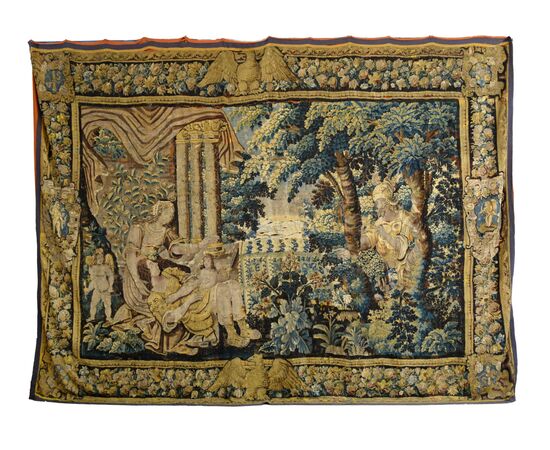16th century wool tapestry, Flanders Brussels
16th century wool tapestry, Flanders Brussels
Measurements: cm H 310 x W 405 approx.
Contact for price
Item accompanied by a certificate of authenticity
This beautiful and precious tapestry, finely crafted and made with wool yarns, was created in the 16th century in Flanders. Stylistically, it shows similarities to works produced by the Brussels manufactory, in which comparable chromatic balances and borders with flowers and fruit can be found. Within a rich border with flowers and fruit, interspersed with cherubs and eagles, a scene from ancient mythology is depicted.
The tapestry, a textile art form, has a very long tradition, and it was in Flanders that it reached the peak of its evolution and artistic quality between the 13th and 15th centuries. Flemish tapestries are prestigious works of art, masterpieces of elegance, commissioned by noble patrons for their palaces. From the beginning of the 15th century, the most important production center was Arras (from which the Italian name for tapestry, 'arazzo,' originates). As early as the second half of the 15th century, other important manufactories arose in Bruges, Oudenaarde, Antwerp, and Brussels.
From the second half of the 15th century until the 17th century, Brussels was the capital of European tapestry.
The success of the decorative tapestry is partly explained by its easy transportability: kings and nobles could roll them up and transport them from one residence to another, and they were draped on the walls of castles for insulation during the winter, as well as for decorative display.
The iconography of most tapestries dates back to written sources such as the Bible and Ovid's Metamorphoses; religious and mythological images are therefore the subject of many tapestries produced during this period.

